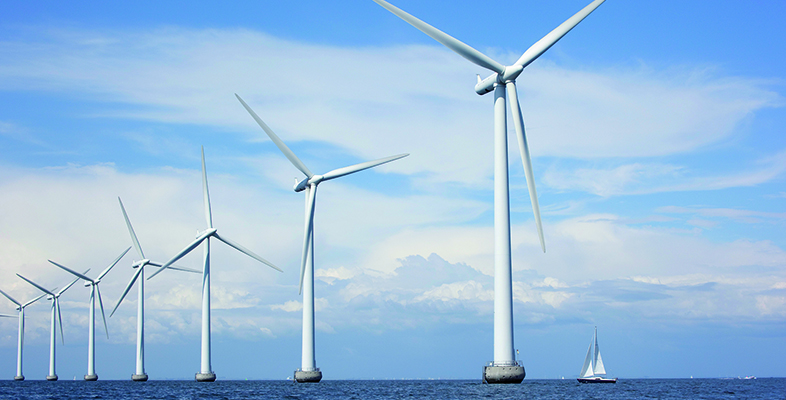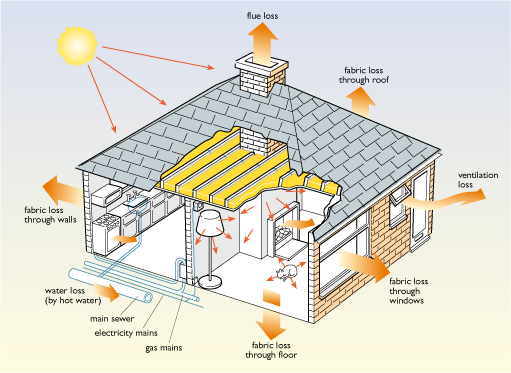2.1 Heating a house
Although it is common to think of a house being heated solely by some form of heating system, in practice it is likely to be warmed by energy from three sources:
- the heating system
- ‘free heat’ gains − from occupants, lights, appliances and from hot water use
- passive solar gains from solar energy penetrating the windows.
In a really low-energy house design, free heat and solar gains may provide more useful heating than the heating system itself.
Obviously in order to achieve a low overall space heating demand it is necessary to reduce the heat losses. Figure 4 shows a small house and illustrates the ways in which heat flows into and out of a house. The losses are particularly important. There are:
- fabric heat losses − those through the building fabric itself, i.e. the walls, roof, floor and windows
- ventilation losses − due to air moving through the building
- flue heat losses − since the heating system is not 100% efficient.
These basic losses also apply to larger buildings.
There are three ways of reducing the space heating energy use discussed in this course:
- cutting the fabric heat losses by the use of insulation (Section 2.2)
- cutting the ventilation loss by making the building more airtight and possibly using mechanical ventilation with heat recovery (Section 2.3)
- installing a more efficient heating system (Section 3).

